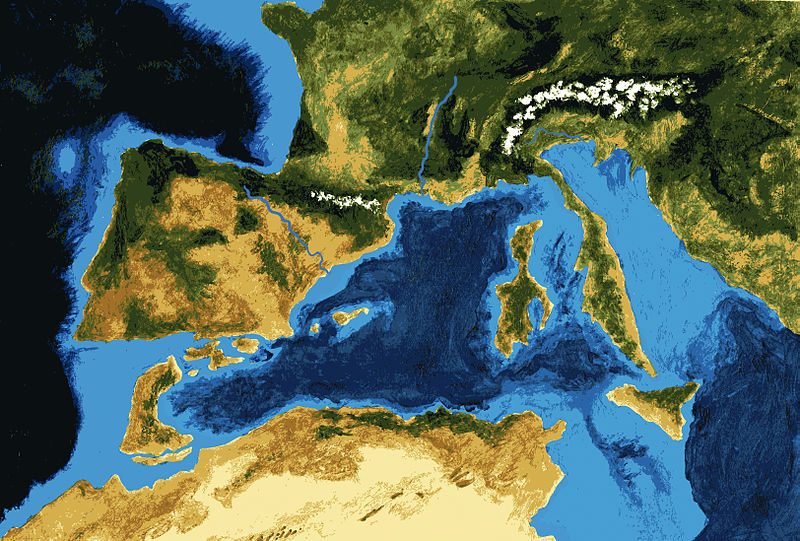Sicily

Realmonte Salt Mine, Sicily: © Rob Butler
Regionally extensive salt deposits are rather rare in the geological record as they require very large, land-locked marine basins from which sea-water can evaporate with only sporadic periods of recharge. Along with the ancient Zechstein Sea, one of the best studied of these so-called “saline giants” is found in the region now containing the Mediterranean Sea. It formed much more recently than the Zechstein – during the Messinian (the last stage of the Miocene epoch) between 8 and 5.5 million years ago. As the African, European and Arabia continents jostled together, forming the great mountain ranges of North Africa and Europe, what was left of the Tethys ocean that once separated these landmasses became progressively restricted and eventually landlocked. The remaining portions of this old ocean basin are preserved as the bed of the Eastern Mediterranean. Below more recent sediments are deposits of Messinian salt many hundreds of metres thick, left behind as the remnants of the Tethys ocean evaporated.
 |
|
| Schematic of the Mediterranean Sea during the Messinian salinity crisis: © Paubahi |
At the very end of the Miocene, the Mediterranean refilled and normal marine conditions (i.e. not hypersaline) were restored. Although there is continuing debate over exactly how this happened, it seems like that water flooded in rapidly from the Altantic through the Strait of Gibraltar, perhaps largely refilling the Mediterranean in just a few months or a couple of years. Today, despite the narrowness of the strait, sea water is effectively exchanged between the Mediterranean and the open Atlantic ocean – so no longer is salt accumulating on the floor of the Mediterranean. Saline giants require just the right arrangement of tectonics and continents to form.
Further reading:
Butler, R.W.H., Maniscalco, R., Sturiale, G. & Grasso, M. 2015. Stratigraphic variations control deformation patterns in evaporite basins: Messinian examples, onshore and offshore Sicily (Italy). Journal of the Geological Society, London, 172, 113-124..Related Links
Other sites
- Twin: Windward Isles
Cwm Idwal
- Twin: Mount Pinatubo
Sperrin Mountains
- Twin: Sierra Nevada
Southern Uplands
- Twin: Nankai
Ben Arnaboll
- Twin: Glarus Thrust
Outer Isles
- Twin: Tohoku Earthquake
Clogherhead and Shannon
- Twin: Papua New Guinea
Cairngorms
- Twin: New Hampshire Granites
Great Glen Fault
- Twin: North Anatolian Fault
The Lizard
- Twin: Troodos Ophiolite
Yoredales
- Twin: Antarctica
Stanage Edge
- Twin: Ganges Delta
Hartland Quay
- Twin: Zagros Range
Amroth-Saundersfoot-Tenby
- Twin: Salt Range, Pakistan
Vale of Eden
- Twin: East African Rift Valley
Zechstein
- Twin: Sicily
Alderley Edge
- Twin: Navajo Sandstone
Isle of Skye
- Twin: Mount Kilimanjaro
Lulworth Cove
- Twin: Albania
Giant's Causeway
- Twin: Cascade du Ray Pic
